THE WASHINGTON POST: Miuccia Prada joins the wave of women making art out of their lives
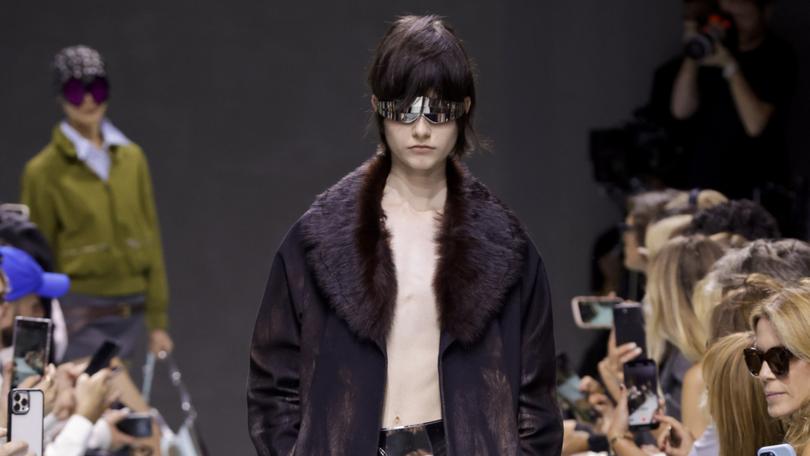
For the love of doomscrolling, can we stop talking about the algorithm?
As I was digesting Thursday afternoon’s Spring 2025 Prada show — a mashup of the ultraconservative dresses and shiny futurism of the 1960s, plus ugly cowboy boots, oddball crumpled hems and collars, and nods to past Prada designs — I received the brand’s official press release.
“We exist in an era of extreme information, immersed in a constant stream of content,” it read.
Sign up to The Nightly's newsletters.
Get the first look at the digital newspaper, curated daily stories and breaking headlines delivered to your inbox.
By continuing you agree to our Terms and Privacy Policy.“Our consumption of the infinite panorama offered by the internet is driven by algorithms, finite sequences of instructions that circumscribe the decidable through logic in a fundamentally illogical world.”

Miuccia Prada and Raf Simons, the brand’s co-creative directors, wanted to contrast that with how random and unpredictable the output and visions of a human mind can be.
Eye roll. Every cultural commentator, whether they are a perennially online TikTok essayist or a highbrow magazine critic, is complaining about the way that “the algorithm” — the mysteriously assembled onslaught of video, images and music that is meant to personalise your online experience but often flattens it — is shaping our tastes and daily lives.
Everything looks the same? Blame the algorithm.
Does everyone like the same stuff? Blame the algorithm.
Nothing feels new. It’s the algorithm!
It’s 2024’s equally simplistic version of condemning “capitalism” for everything.
Backstage, Simons reiterated that he and Mrs. Prada (as the industry deferentially calls her) “wanted to make every individual their own individual,” in opposition to the supposed flatness of algorithmic culture.

But it’s far too late for a brand as forward-thinking as Prada to use the algorithm as source material for a fashion show, even if the collection’s purpose was to react against it.
The theme was all the more disappointing because Mrs. Prada and Simons are the industry’s foremost philosophers.
Their ideas don’t move you to buy things per se; no one is buying a 5600 euro gazar dress because that season’s message about craft really resonated, man.
Prada, which also owns Miu Miu and Church’s, has been the bonkers luxury success story of the past four years because it creates compelling products, which is what fashion brands exist to do.
Fortunately, like runway hairstyles and hangtags featuring facts about sustainability, news releases in fashion are rarely to be trusted.
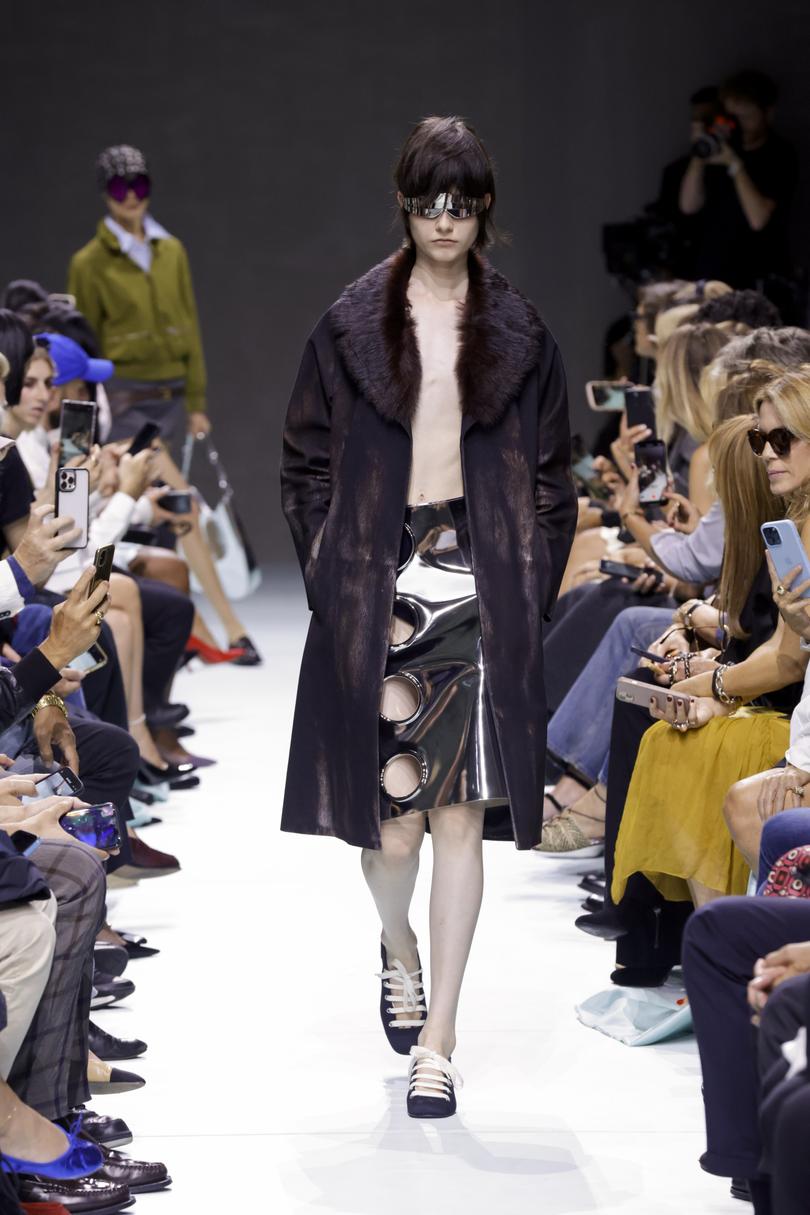
And the Prada collection is much more interesting if you ignore the designers’ stated intentions.
Watching those references to the 1960s futurist-minimalists, such as Paco Rabanne’s metallic hardware and Andre Courrege’s circular cutouts, I thought of Mrs. Prada’s own wardrobe — an assortment of 1960s vintage and her own designs.
She wore Yves Saint Laurent to distribute communist party leaflets, goes a possibly apocryphal story. (Though I once asked her about this, and she didn’t deny it.)
This collection joins a larger cultural movement of women making art about their own lives: Miranda July’s “All Fours” (she also scripted a recent campaign for Prada), Joanna Hogg’s “The Souvenir” series, and, of course, books by Annie Ernaux, Rachel Cusk, Sheila Heti and all those recent divorce and sour marriage novels.
This was fashion autofiction: Mrs. Prada tearing through her own closet and putting things together in maniac ways, like a windbreaker over a Cristobal Balenciaga-ish feather dress with a bucketlike visor, or an Edie Sedgwick-style leopard coat over a bathing suit.
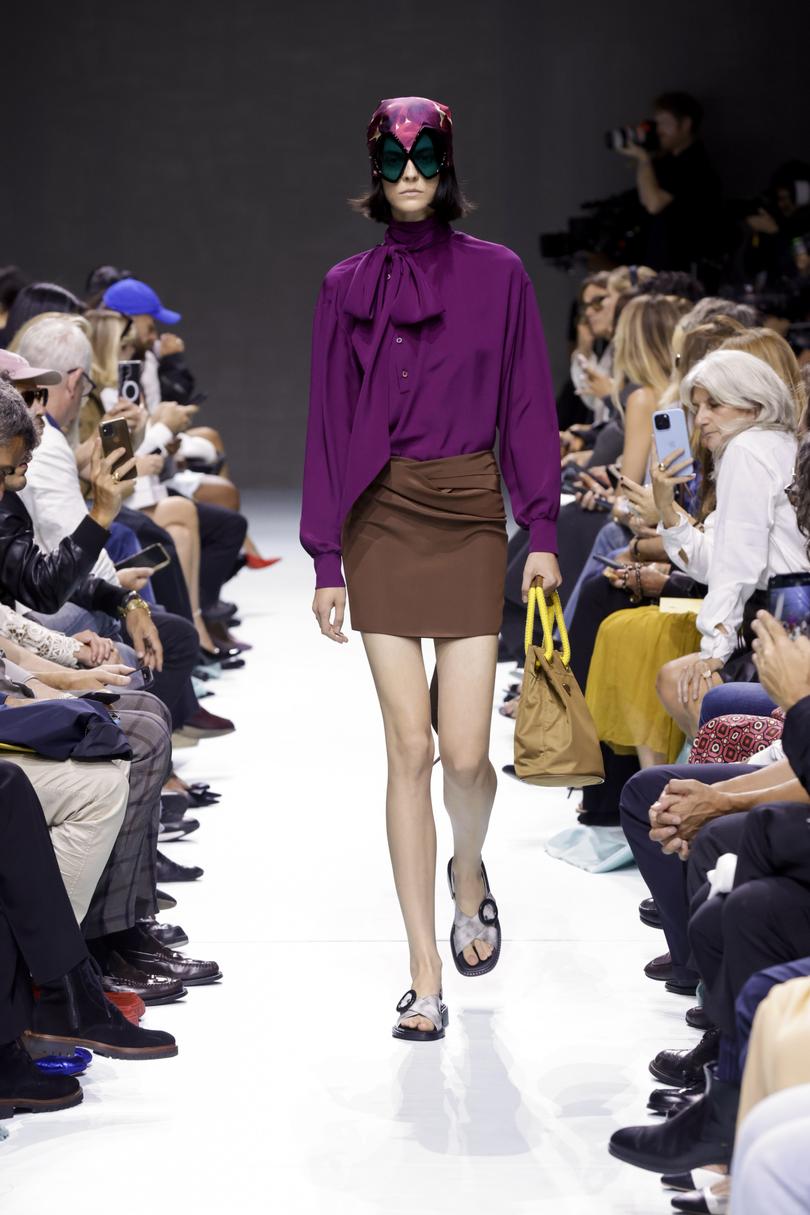
There were a handful of pussy-bow blouses, with Kamala Harris signature, perhaps a comment on the way consumers just want what makes them feel connected to culture at large, even if it’s ugly or dated.
A year after an industry reckoning on the paucity of female design talent, we see an important shift: women who put their persona at the centre of her brand.
This includes big names like Prada, Tory Burch, Hermes’s Nadège Vanhée, and The Row’s Mary-Kate and Ashley Olsen, plus medium and smaller ones such as Simone Rocha, Chloé’s Chemena Kamali, Sacai’s Chitose Abe and Batsheva Hay.
Designers always get dinged for sending out outrageous designs and then taking their bow in understated clothes, sometimes even insisting they don’t have time to think about what they wear. That’s for the customer, dahling.
These women wear their designs. They live the life few businesswomen are able to: not only in charge but expressing themselves, even declaring their personalities through clothes, while doing so.
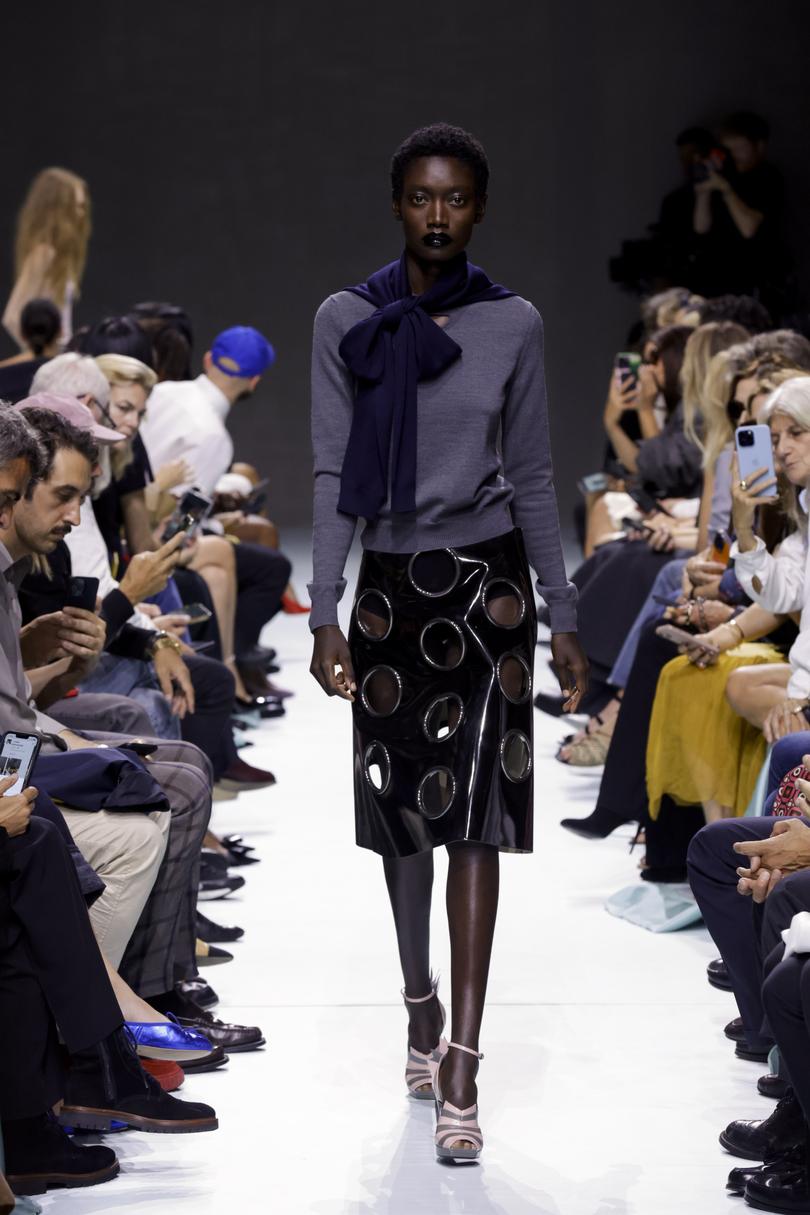
That is much more aspirational than any campaign imagery or celebrity in designer duds could conjure.
A funny thing happened when Simons, who was a cult figure in the menswear world before designing at Dior and Calvin Klein, joined Mrs. Prada in 2020: The brand became more about her.
Miu Miu may be her personal playground, but the marquee line is just as biographical, with its decadent commitment to corrupting conservative clothes like opera coats, cocktail dresses, ladylike handbags and even the canon of fashion itself.
Social media now fangirls over her wardrobe and jewellery collection. She was on the March cover of Vogue! And the more this brand becomes about Mrs. Prada, the better it gets.
The second question packed into this show, a more existential one, was the drama of wrestling with the future.
This collection was filled with references to 1960s fantasies about what’s to come: enormous shield sunglasses, like a fashion version of the kind of equipment you might wear to send a spaceship to orbit the sun; mirrored dresses and utilitarian details inspired by the use of new materials in art and technology during the mid-century.
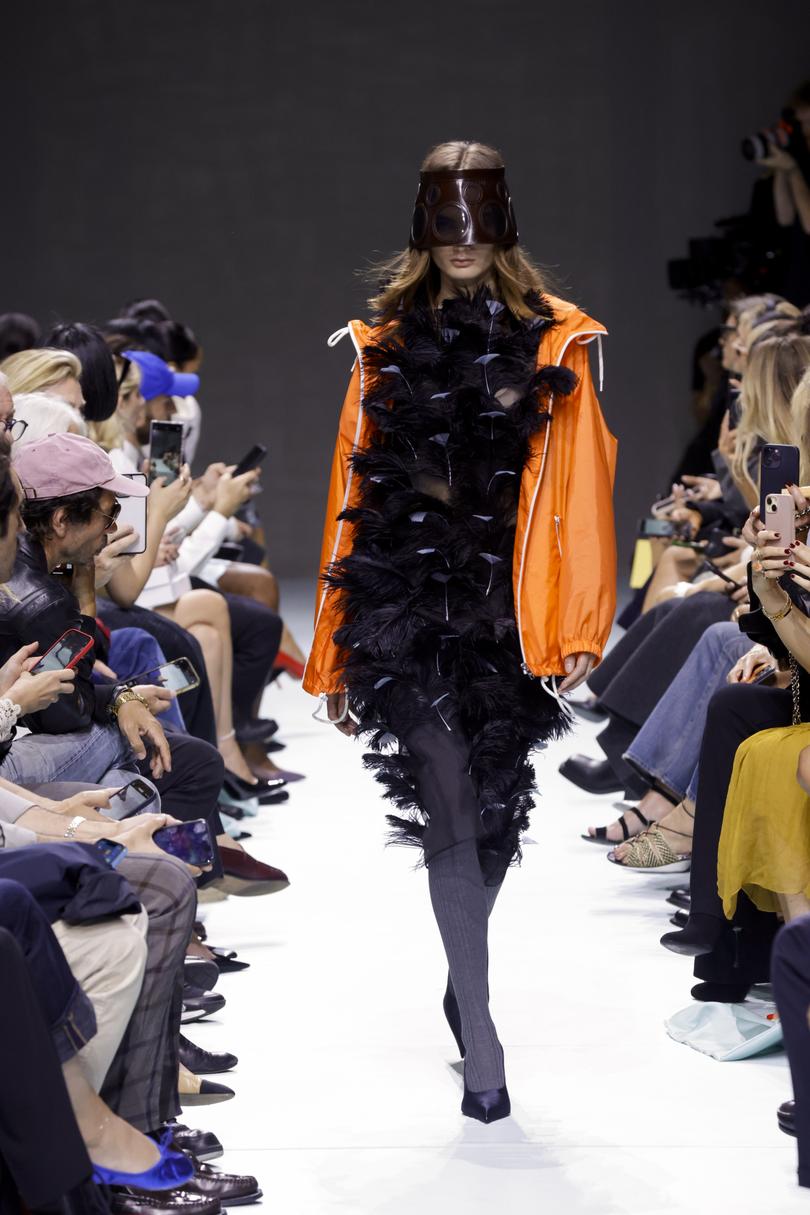
That’s an optimism we can barely dream of now; that Space Race coolness looks quaint.
Other historical references emphasised the challenge of how we update old ideas to meet the needs of today.
There were several old Prada pieces, especially shoes, with almost nonsensical tweaks: The famous flame heel from Fall 2008 looked muddied or abstracted, and the origami shoes from Fall 2023 had new folds and spikes in weird places.
They looked as if they’d been sent through an AI machine or 3D printer and spit back out — almost it, but not quite.
One of the tromp l’oeil details was a fur print, sometimes shown with what appeared to be a real fur collar.
Many brands have stopped using fur or struggled to find ethical workarounds even as consumer interest has returned.
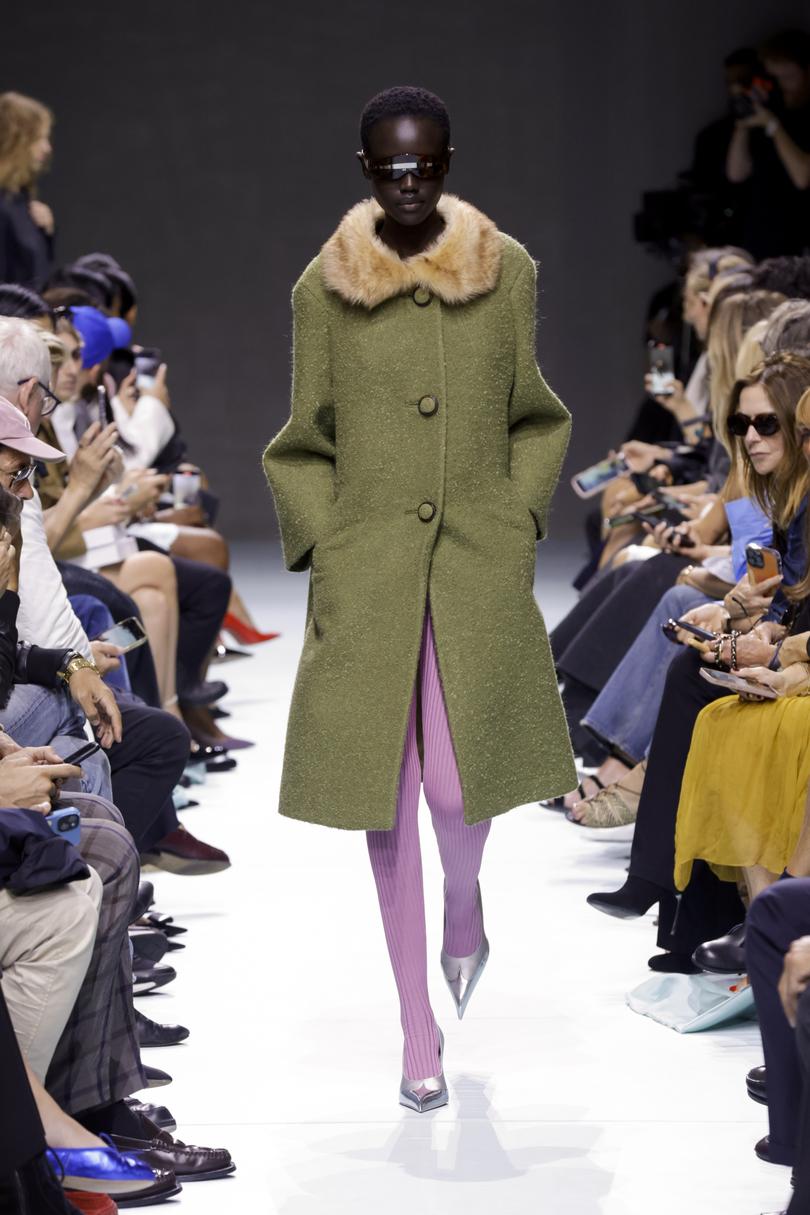
The gesture was very Elsa Schiaparelli, the Surrealist-adjacent couturier wit who is sometimes said to be a spiritual sister to Mrs. Prada (their symbiosis was the subject of the 2012 Costume Institute show).
Those pieces also recalled perverse Surrealist fur artist Meret Oppenheim; you have probably seen her gazelle fur-lined cup, saucer and spoon, “Object,” from 1936.
It was as if Prada was saying, you want fur? But we’re not supposed to give it to you! So here is a drawing of it, ha ha ha! And it will be just as expensive!
Maybe this is what Prada and Simons’s conjuring of the algorithm meant — that even these two originals, in trying to present something new, end up looking at their previous work.
Maybe we live in a world of tributes, reboots, remakes and deepfakes which are really a faithful reproduction of a past that never happened.
We look again and again at the evidence from the past, seeing what inevitably seems to be coming, but too afraid to imagine it fully, and ask no one in particular, “Where did we go wrong? Was it here, here, here?”
(c) 2024 , The Washington Post
